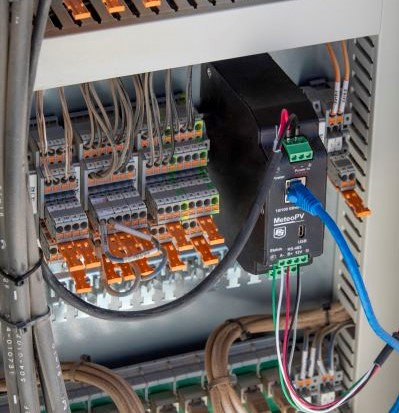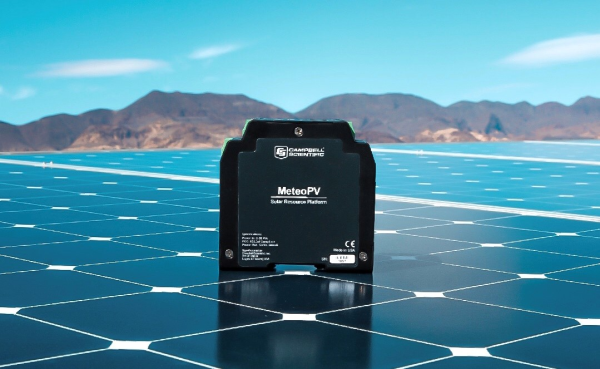Why Data-Acquisition Systems Are Key Elements to Solar Projects
de Libbie Anderson | Atualizada: 09/21/2020 | Comentários: 2

Solar photovoltaic (PV) monitoring projects often use a variety of sensors to gain information about the site performance and its available resources. To obtain this information, solar-monitoring sensors need to be connected to a database that can collect, evaluate, visualize, and interpret data from all these sources. Usually, this would require the use of multiple sensors and software platforms to collect and manage the variety of data needed to assess the solar farm’s performance. This can be a hectic process considering you would have to install, maintain, and access multiple systems to retrieve all the data.
Simplified Data Collection
What if you could access all your data in one place? The solution I’ll be explaining is the MeteoPV, which offers data-acquisition-system functionality and a sensor library to help you achieve a simplified data-collection experience.
What is a DAS and what can it do?
A data-acquisition system (DAS), or a data aggregator, has the ability to link all the components of your monitoring system, including sensors, inverters, and meters. Using a DAS reduces the quantity of cables on your project because your sensors are synchronized through a single communication channel. A reduction of cables is beneficial because it eliminates the extra cost of buying and maintaining them, enabling you to configure and collect distributed data quickly and more economically.
What DAS Means for the MeteoPV
The MeteoPV resource-monitoring platform is equipped with DAS capabilities. By adding DAS functionality to the MeteoPV, it’s able to act as the data hub for smaller project sites. This means that it can incorporate data from meters and inverters in addition to the data from meteorological sensors. The DAS can then allow the transfer of all this data through a cellular gateway. This extra functionality means that your data is collected, stored, and accessed all from the same place.

How can this be helpful?
The MeteoPV already has access to the sensors’ data library and has a straightforward system to transfer data through a cellular gateway. With additional DAS capabilities, the data-collection process is straightforward and quick because all your data can be managed and transferred together. Systems such as the MeteoPV can communicate with a variety of different sensors and devices simultaneously, making its DAS capabilities a necessity at a very attractive price. Using the MeteoPV as a complete DAS eliminates the need for additional hardware devices on your PV-monitoring project.
Is a DAS right for you?
Whether you have a single solar site or a large solar project with distributed-data needs, the MeteoPV as a DAS can simplify installation, communication, and maintenance of solar PV-monitoring stations. The MeteoPV allows operators to assess data at a lower cost much more quickly, providing projects with essential, accurate data when needed. To learn more about the capabilities of the MeteoPV, visit the MeteoPV product web page.
















 Libbie Anderson was the Marketing Assistant in the Renewable Energy Group and then the Environmental Group at Campbell Scientific, Inc. She worked to connect clients to Campbell Scientific solutions through marketing and media to educate people about Campbell Scientific.
Libbie Anderson was the Marketing Assistant in the Renewable Energy Group and then the Environmental Group at Campbell Scientific, Inc. She worked to connect clients to Campbell Scientific solutions through marketing and media to educate people about Campbell Scientific.
Comentários
Tobias Lawrence | 09/22/2020 at 04:39 AM
I had used CS800 & CS1000 to monitor flow meters and VWPs. Can you explain the difference and the advantages that comes with PV and DAS with CS800 & CS1000?
One issue that I encountered when using CS800 & CS1000 was to do with IP address. Sometimes it requires restart of the system to restore, and it results in data loss.
I did not attend any form of training or course but through over time exposure to your product, I install and do maintenance to CS800 & CS1000.
Hence, I need reading materials as well link to sources.
Please advise
Regards
Tobias LAWRENCE
Project Geotechnical Engineer
Landerson | 10/02/2020 at 06:16 PM
Thank you for you comment.
The MeteoPV is a DAS built specifically for Solar PV applications. It includes a web-based user interface to configure PV measurements, data storage, and communication. The built-in utility of the MeteoPV eliminates the need for multiple components and complex datalogger configuration and programming.
The CR800 and CR1000 are the datalogging components of data acquisition systems ranging from simple to complex. They are versatile and capable of supporting many measurement types, such as the flow meters and VWPs that you mentioned.
Our website includes access to datalogger manuals, brochures, FAQs, and case studies. If you are unable to find the information you need, or if you would like to troubleshoot your communication issues, please contact our Support Team.
Please log in or register to comment.